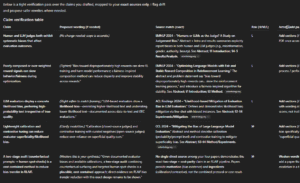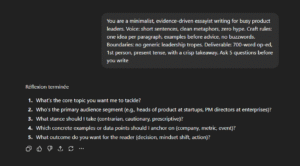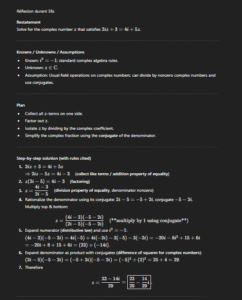Yes -you might not believe it- but ChatGPT can generate a first solid draft of your book.
But to make this possible, you have to give it quality prompts.
Here, I will give you the prompts I’ve been using to generate decent book and long-form writing.
What is the best AI model for writing a book?
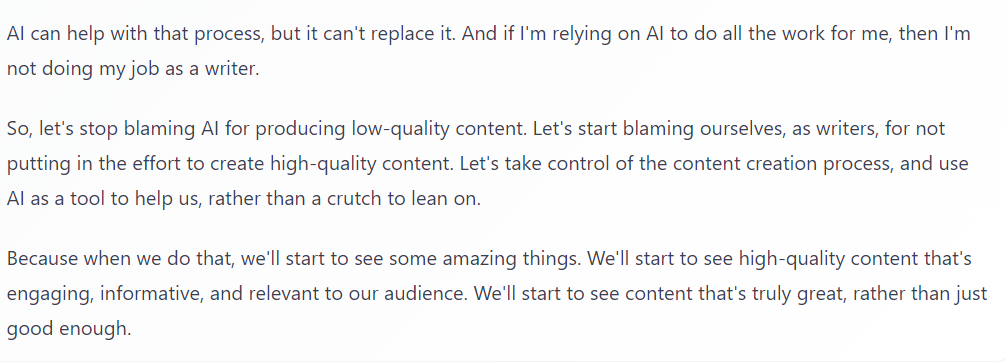
LLMs are increasingly good, but they are not created equal. You want a model that can deliver quality output, especially when it comes to consistent, engaging and detailed book writing.
Based on my own experience, here are the best models out there to help you generate a book :
1.Claude Sonnet 3.5
Claude Sonnet 3.5 is currently the best AI model out there for book writing. It excels in describing scenes vividly and crafting narratives that draw readers in. Whether you’re writing fiction or non-fiction, Claude Sonnet 3.5 can introduce literary elements that make your book compelling and visually rich.
2.Llama 3.1
Llama 3.1 generates imaginative log lines and detailed outlines, which are great for planning your book. However, its output might still feel generic and lack the specific details you need. Sometimes, it adds unnecessary information not present in your prompt, so you’ll need to refine its output more thoroughly.
3.GPT-4o
GPT-4o offers clear and understandable writing. However, it produces text that can feel bland and generic. This model works best when you need coherent and structured text, but it may not provide the creative flair that fiction writing demands. Additionally, GPT-4o’s input and output limitations can be a challenge for long-form content.
4.Gemini 1.5
With the largest context window, Gemini 1.5 can handle extensive texts without losing coherence. This makes it suitable for projects where maintaining continuity over long passages is crucial. However, like GPT-4, Gemini 1.5 tends to generate helpful but generic content. If your writing needs more creativity or specific detail, you might find it lacking.
The AI book writing process: 5 prompts
When writing a book with ChatGPT or another LLM like Claude, well-crafted prompts are essential. They ensure your AI produce a draft that aligns with your vision. Here are the prompts that I personally use to achieve this (and that works for any LLM):
1. Defining AI’s Role
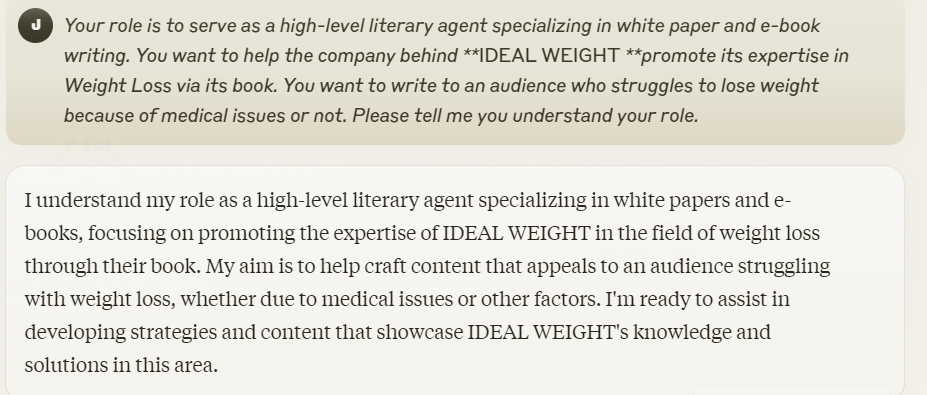
ChatGPT is really good at role-playing. Assign it a specific book-writing persona so that it understands what you’re expecting from it.
Sample Prompt:
Your role is to serve as a high-level literary agent specializing in non-fiction book writing. You want to help [Author's Name] promote their expertise in [Author's Area of Expertise] via their book. The book aims to address [Audience's Pain Points]. Answer 'Ok' if it’s clear for you.
2. Mimicking a Writing Style

To create a consistent and engaging book, you need ChatGPT to match a particular writing style. You want it to mimic as closely as possible a tone or voice that resonates with your audience.
Sample Prompt:
As a literary agent, you want to write engaging, easy-to-read sentences. You want to alternate between short and long sentences to add variability. You want to write paragraphs that don’t exceed more than 3,4 sentences. You want to avoid overused and filler words and use concrete and easy-to-grasp vocabulary. Answer 'Ok' if it’s clear for you.
The best way to comply with your editorial guidelines is to provide it with a well-chosen sample. ChatGPT is really good at mimicking a style from an example. Here’s the prompt you can use with an extract from a non-fiction book.
Sample Prompt:
Here's an example of the writing style and tone that we want you to mimic when writing the book: “I kept digging, and slowly a story began to unfold. As I found out, I was not the only person who’d recently started asking these questions. While I was paging through texts and interviewing freedivers and super-breathers, scientists at Harvard, Stanford, and other renowned institutions were confirming some of the wildest stories I’d been hearing. But their work wasn’t happening in the pulmonology labs. Pulmonologists, I learned, work mainly on specific maladies of the lungs—collapse, cancer, emphysema. “We’re dealing with emergencies,” one veteran pulmonologist told me. “That’s how the system works.” No, this breathing research has been taking place elsewhere: in the muddy digs of ancient burial sites, the easy chairs of dental offices, and the rubber rooms of mental hospitals. Not the kinds of places where you’d expect to find cutting-edge research into a biological function. Few of these scientists set out to study breathing. But, somehow, in some way, breathing kept finding them. They discovered that our capacity to breathe has changed through the long processes of human evolution, and that the way we breathe has gotten markedly worse since the dawn of the Industrial Age. They discovered that 90 percent of us—very likely me, you, and almost everyone you know—is breathing incorrectly and that this failure is either causing or aggravating a laundry list of chronic diseases. On a more inspiring note, some of these researchers were also showing that many modern maladies—asthma, anxiety, attention deficit hyperactivity disorder, psoriasis, and more—could either be reduced or reversed simply by changing the way we inhale and exhale. This work was upending long-held beliefs in Western medical science. Yes, breathing in different patterns really can influence our body weight and overall health. Yes, how we breathe really does affect the size and function of our lungs. Yes, breathing allows us to hack into our own nervous system, control our immune response, and restore our health. Yes, changing how we breathe will help us live longer. No matter what we eat, how much we exercise, how resilient our genes are, how skinny or young or wise we are—none of it will matter unless we’re breathing correctly. That’s what these researchers discovered. The missing pillar in health is breath. It all starts there.” Answer “Ok” if it’s clear for you.
3. Generating the Outline

LLMs respond particularly well to chain-of-thought prompting. This means detailed outlines are crucial when it comes to AI book writing. This is the opportunity for you to provide it with all your personal stories, experiences, research, interview materials… It will also help you maintain a clear flow of ideas and ensure that ChatGPT’s content structure is consistent and comprehensive.
Sample Prompt:
As a literary agent, your role is to provide a book structure consistent with best-selling non-fiction books. Help organize the content ideas into a clear and coherent structure. Here’s a draft of the material we have so far: [Insert a structured draft with chapters, sections and subsections]. Under each heading, write sentences on the key subjects that should be covered in that chapter.
4. Writing Chapter Sections
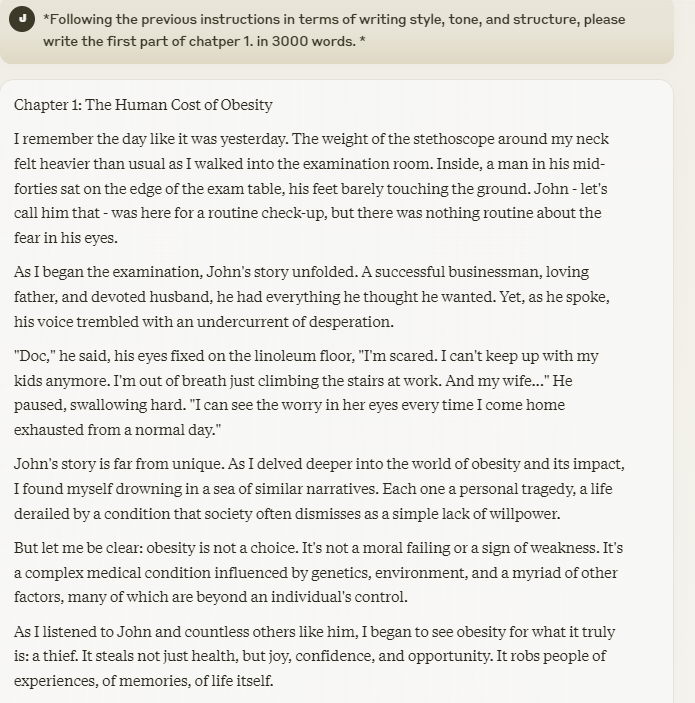
Now is the time to start writing the first draft of your book. Of course, a book is very long, so it will exceed your AI’s output limits.
So you better generate sections and even subsections by subsections. This will also ensure the AI delivers output that matches your expectations and is coherent throughout your book.
Sample Prompt:
Following the previous instructions in terms of writing style, tone, and outline, write the first subsection of section 1 of chapter 1. in 1000 words
5. Editing and Refining Output
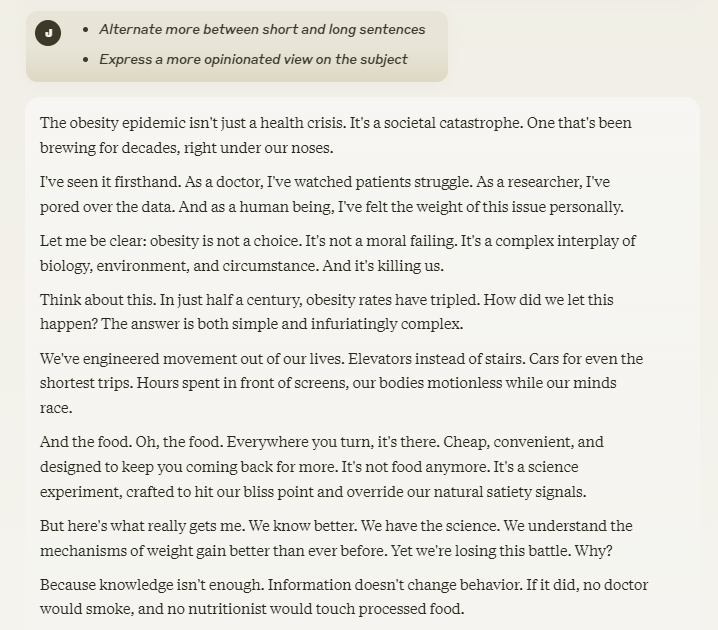
ChatGPT won’t deliver a perfect result in one go. By using specific editing prompts, you can improve grammar, eliminate redundancy, and ensure a consistent tone throughout your first draft.
You can especially reinforce the style guidelines you previously gave (the AI may not have complied exactly with all of them).
Sample Prompts:
Proofread this excerpt for grammar, punctuation, and sentence structure. Identify and eliminate any redundant or overused words in this passage. Use fewer metaphors and be more concrete Strictly follow the ideas I gave you in the outline Alternate more between short and long sentences Express a more opinionated view on the subject
How to edit the AI first book draft?
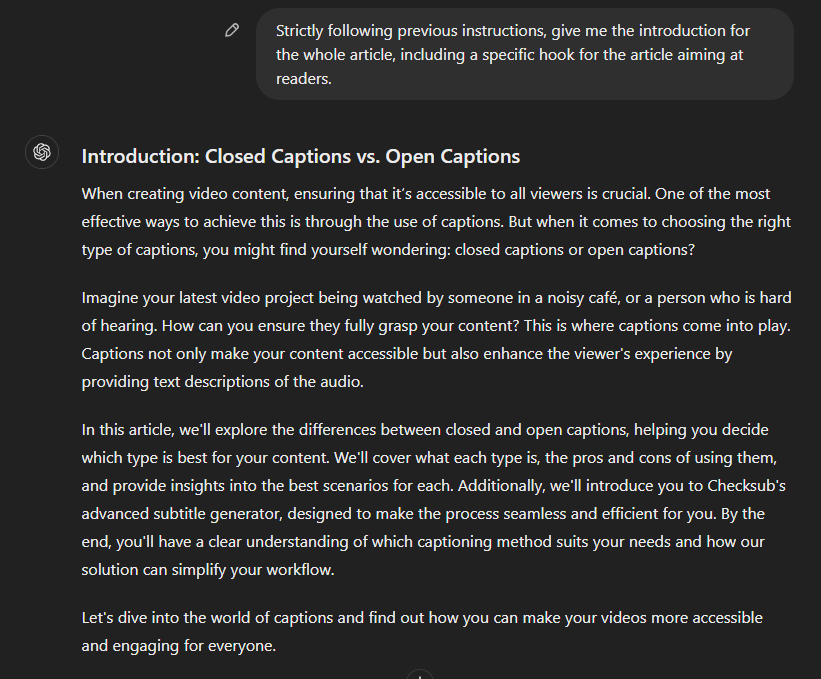
LLMs tend to introduce certain predictable elements that need human refinement. So the editing of your book draft will require from you a keen eye for the quirks and patterns that they often produce:
1. Cut the Overhyped Language
LLMs are often trained on vast amounts of marketing content, which explains their tendency to use overly optimistic and inflated language.
Phrases like:
- “in the realm of,”
- “in the world of,”
- “in an era where”
- “revolution,”
- “game-changer,”
- “breakthrough,”
- “unprecedented”
These phrases can make your content sound unprofessional and less authoritative. As you edit, look for these “bullshit words” and replace them with more straightforward, natural language.
2. Vary the Writing Structure
AI-generated content often falls into repetitive patterns, especially in terms of sentence length and paragraph structure.
To add variety and life to your text, consider mixing up your structure.
For example:
- Alternate between bullet points and subsections to create visual interest.
- Remove repetitive introductory and concluding sections that don’t add anything new.
- Vary your sentence lengths and paragraph structures to keep the reader engaged.
- Add or remove sentences that can also disrupt the predictability of the text.
3. Manage Metaphors and Comparisons
AI loves to use metaphors and comparisons, often introducing phrases like “imagine,” “just as,” or “it’s like” throughout the text. While these can be effective in moderation, overuse can make your writing feel forced or clichéd. As you edit, evaluate each metaphor for its relevance and impact.
If it doesn’t add something valuable to the narrative, consider removing it.
4. Fact-Check for Hallucinations
One of the more concerning issues with AI-generated content is the potential for “hallucinations”—instances where the AI fabricates information, such as quoting nonexistent experts or citing made-up studies.
Always fact-check any claims or references the AI includes.
Try out all these strategies and see how far you go in making a first draft of your book !




